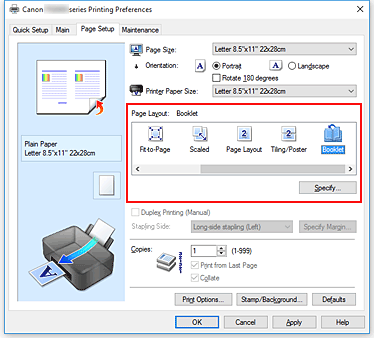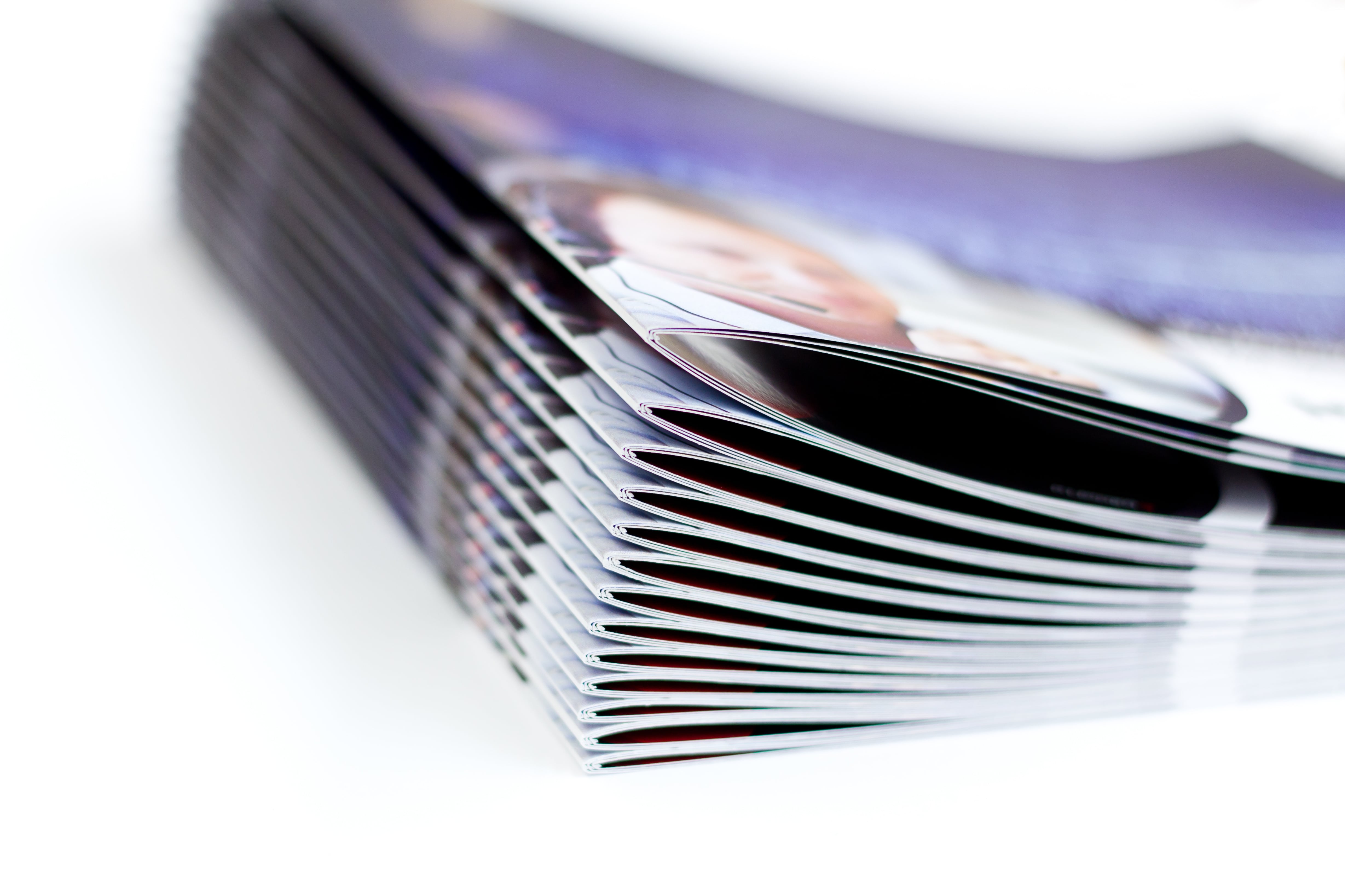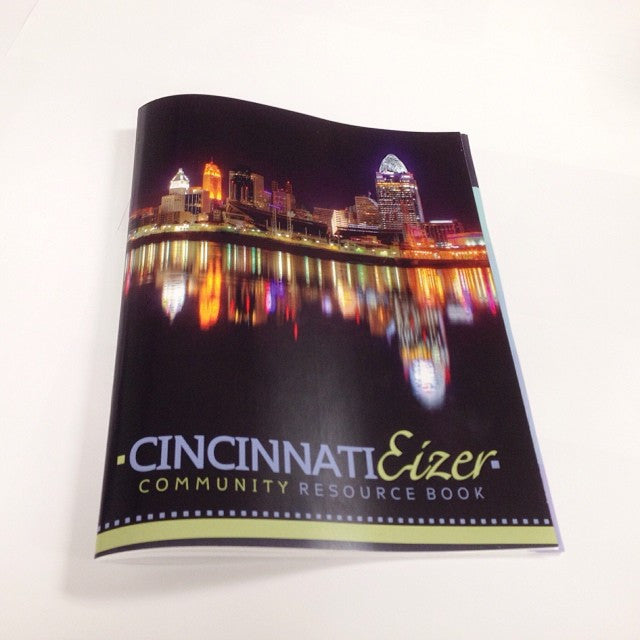The Pros and Cons of Digital vs. Offset Booklet Printing
The Pros and Cons of Digital vs. Offset Booklet Printing
Blog Article
The Vital Guide to Understanding Pamphlet Printing Options and Techniques
The procedure of brochure printing involves numerous factors to consider that can considerably affect the final item. From choosing the suitable format and dimension to comprehending the nuances of binding approaches, each option plays an important duty. Furthermore, factors such as paper stock and printing strategies additional affect the efficiency of the booklet. As one browses these choices, it becomes imperative to understand just how they adjoin and what that implies for the total outcome.
Understanding Brochure Formats and Dimensions
When considering pamphlet printing, comprehending the numerous styles and dimensions available is crucial for accomplishing the wanted presentation. Booklets can be generated in various layouts, including saddle-stitched, spiral-bound, and perfect-bound, each offering distinctive advantages. Typical dimensions range from conventional letter (8.5 x 11 inches) to smaller sized options like A5 (5.8 x 8.3 inches), enabling adaptability based on material and target audience.Selecting the proper size can influence both the design and reader involvement. Bigger dimensions could fit visually driven content, while smaller styles might be more straightforward and mobile. Additionally, the variety of web pages affects the choice of binding approach, as thicker brochures might call for stronger bindings. Inevitably, recognizing these aspects permits a much more customized strategy, ensuring that the end product lines up with the designated message and visual, boosting the total effectiveness of the communication.
Choosing the Right Paper Stock

Binding Approaches: Options and Considerations
When it comes to binding methods for brochures, numerous alternatives are available, each with distinct advantages. Saddle stitch binding uses a cost-efficient solution for thinner booklets, while ideal binding methods supply an even more sleek search for thicker publications. Wire-O binding sticks out for its durability and convenience of use, making it optimal for papers that need versatility.
Saddle Stitch Binding
Saddle stitch binding supplies a practical and cost-effective solution for assembling booklets, making it a popular choice amongst authors and organizations. This binding approach includes folding sheets of paper in half and stapling them along the fold line, creating a well organized and cool look. Usually appropriate for brochures with a lower web page matter, saddle stitching is perfect for magazines, sales brochures, and educational materials. The simplicity of this strategy permits quick production and is often preferred for advertising products or short runs. Nonetheless, it is important to note that saddle stitch binding might not be appropriate for thicker brochures, as the spine might not hold up under raised weight. In general, it remains a trusted choice for many printing jobs.
Perfect Binding Techniques
Perfect binding is an extensively used strategy that offers a sleek and expert coating to publications and brochures. This approach includes gluing the web pages together at the spinal column making use of a strong adhesive, enabling a clean edge and the capacity to hold a larger variety of web pages compared to saddle sewing. Perfect binding is specifically suitable for thicker brochures, such as catalogs and annual records, where a sturdy, flat spinal column is desired. In addition, it provides the option for a printed cover that can be made to enhance visual charm. Considerations such as web page matter, paper weight, and the planned usage of the booklet ought to be taken into account, as they can impact longevity and overall quality.
Wire-O Binding Options
Wire-O binding, understood for its toughness and versatility, uses a superb alternative for pamphlets that require easy page turning and a professional appearance. This binding method employs a series of steel loopholes that hold web pages firmly, permitting them to exist level when open. It is especially appropriate for discussions, handbooks, and brochures because of its durable nature. Wire-O binding is offered in various shades and diameters, fitting different web page counts and thicknesses. In addition, it allows the incorporation of tabs and covers, boosting the booklet's overall aesthetic. Considerations for Wire-O binding consist of the choice of cable shade, the dimension of the loopholes, and the degree of modification wanted, all of which can exceptionally influence the end product's look and functionality.
Digital vs. Offset Printing: Which Is Best for You?
When picking a printing technique for booklets, recognizing the distinctions between electronic and offset printing is necessary. Digital printing uses modern-day technology to produce high-grade prints rapidly and affordably, making it suitable for short runs or tasks requiring fast turnaround times. It enables customization, redirected here giving the capability to publish on-demand with minimal waste.In comparison, offset printing is a standard method that masters producing big amounts with consistent high quality. It entails transferring ink from a plate to a rubber covering, after that to the paper, which results in lively colors and accurate information. Nevertheless, counter printing generally needs longer arrangement times and is much more economical for bigger volumes.Ultimately, the choice between Clicking Here digital and counter printing depends on project demands, spending plan, and wanted quantity. For little, time-sensitive jobs, electronic could be the very best selection, while offset may be more suitable for larger, top notch manufacturings.

Creating Your Brochure: Tips and Best Practices
When designing a booklet, mindful interest to format, font option, and shade usage can considerably improve its effectiveness. A well-structured format overviews the visitor's eye, while appropriate typefaces assure readability and communicate the desired tone. Additionally, effective use color can stimulate feelings and highlight vital info, making the overall layout a lot more impactful.
Choosing the Right Format
Exactly how can one efficiently pick the ideal layout for a pamphlet? It is necessary to assess the pamphlet's function and target audience. A tidy, organized format enhances readability and involvement. Utilizing a grid system can assist in aligning components regularly, developing a professional look. Additionally, integrating aesthetic pecking order via varying sizes and positionings of images and message can lead the visitor's eye and stress key info. It is likewise essential to leave adequate white area, which prevents overcrowding and enables far better focus. Evaluating various formats via mock-ups can provide insight right into just how the design performs in real-world scenarios, making sure that the last item fulfills both visual and useful requirements.
Choosing Suitable Font Styles
An appropriate font style can substantially boost the total layout of a pamphlet, enhancing the format and enhancing the web content's message. The option of typefaces need to take into consideration readability, specifically for body message, as it ensures the info is easily accessible to all visitors. Sans-serif font styles are commonly liked for digital formats, while serif fonts can lend a typical feeling in published materials. It's recommended to limit font selections to 2 or three to maintain visual comprehensibility. Furthermore, font style size plays a vital duty; headings must be not frustrating but distinct, while body message ought to fit for analysis. When choosing fonts, alignment with the brochure's theme and target market is necessary for efficient communication and visual appeal.
Reliable Use Color
Shade acts as an effective tool in pamphlet design, forming perceptions and leading visitor feelings. official statement It can evoke sensations of calmness, depend on, or excitement, depending upon the tones selected. Designers must consider color theory concepts, ensuring that the chosen combination straightens with the booklet's message and target audience. Making use of cozy shades like red and orange can develop urgency, while cooler tones like blue and green foster tranquility.Additionally, contrast plays a crucial function; corresponding shades can improve readability and aesthetic charm. Uniformity in shade use throughout pages better strengthens brand name identification and communication. Inevitably, reliable shade execution not just records interest however likewise strengthens the brochure's function, making it an essential element of successful style.
Finishing Touches: Coatings and Special Effects
While several take into consideration the web content and format of a brochure the most crucial elements, the finishing touches, such as coatings and unique impacts, play a vital role in enhancing its total charm. Coatings can offer protection and durability, ensuring that the pamphlet stands up to wear and tear. Matte coatings use an advanced, non-reflective surface, while shiny finishings can make colors show up more dynamic and appealing. Unique effects, like embossing or foil marking, add a tactile measurement that can create a remarkable perception. These techniques can highlight certain areas, attracting interest to vital info or creating visual passion. Furthermore, UV coating can give a high-shine finish that boosts the overall look.Together, these completing touches not only improve the pamphlet's aesthetic yet also interact professionalism and reliability and focus to detail, eventually leaving a lasting effect on the viewers.
Expense Factors To Consider for Booklet Printing
Comprehending the numerous cost considerations for pamphlet printing is important for services and companies intending to optimize their budgets. Secret variables influencing expenses consist of the choice of binding, paper, and ink methods. Higher quality materials, such as superior paper or specialized inks, commonly increase the overall expenditure. Additionally, the dimension and web page matter of the booklet play a significant function; larger brochures call for even more sources and time to produce.Another vital factor to consider is the printing technique, whether digital or offset, as each has its own pricing structure and suitability for different quantities. Businesses ought to also factor in design costs, which can vary based on intricacy and the usage of specialist solutions. Inevitably, delivery and handling charges can include in the total, particularly for large orders. By examining these aspects, organizations can make informed decisions that align with their financial capacities while attaining the preferred high quality in their published materials.
Frequently Asked Inquiries
What Are the Ecological Effects of Pamphlet Printing?
The environmental effects of pamphlet printing include logging from paper manufacturing, carbon exhausts from transportation, and waste generation from thrown out products - Booklet Printing. Sustainable practices, such as utilizing recycled paper and environment-friendly inks, can minimize these effects
Exactly How Can I Guarantee Color Precision in My Brochure?
To guarantee shade accuracy in a booklet, one need to use calibrated displays, utilize professional shade profiles, perform test prints, and select high-grade printing solutions that offer shade matching and proofing options for ideal results.
What Is the Typical Turnaround Time for Booklet Printing?
The regular turnaround time for pamphlet printing varies relying on the complexity and amount - Booklet Printing. Typically, it varies from a few days to 2 weeks, influenced by variables such as printing approaches and finishing demands
Are There Minimum Order Quantities for Brochure Printing?

Can I Print Brochures in Numerous Languages?
Publishing pamphlets in multiple languages is possible. Many printing services provide choices for multilingual or multilingual formats, permitting reliable interaction. Mindful preparation guarantees that design elements accommodate various languages without compromising readability or looks. In addition, variables such as paper supply and printing methods additional affect the efficiency of the brochure. When thinking about booklet printing, understanding the various formats and dimensions readily available is crucial for attaining the wanted discussion. When choosing a printing method for booklets, recognizing the distinctions in between digital and offset printing is essential. In addition, the dimension and page count of the pamphlet play a substantial function; larger pamphlets need more resources and time to produce.Another important factor to consider is the printing strategy, whether electronic or offset, as each has its own rates structure and suitability for various quantities. The environmental influences of pamphlet printing consist of logging from paper manufacturing, carbon discharges from transportation, and waste generation from thrown out materials.
Report this page